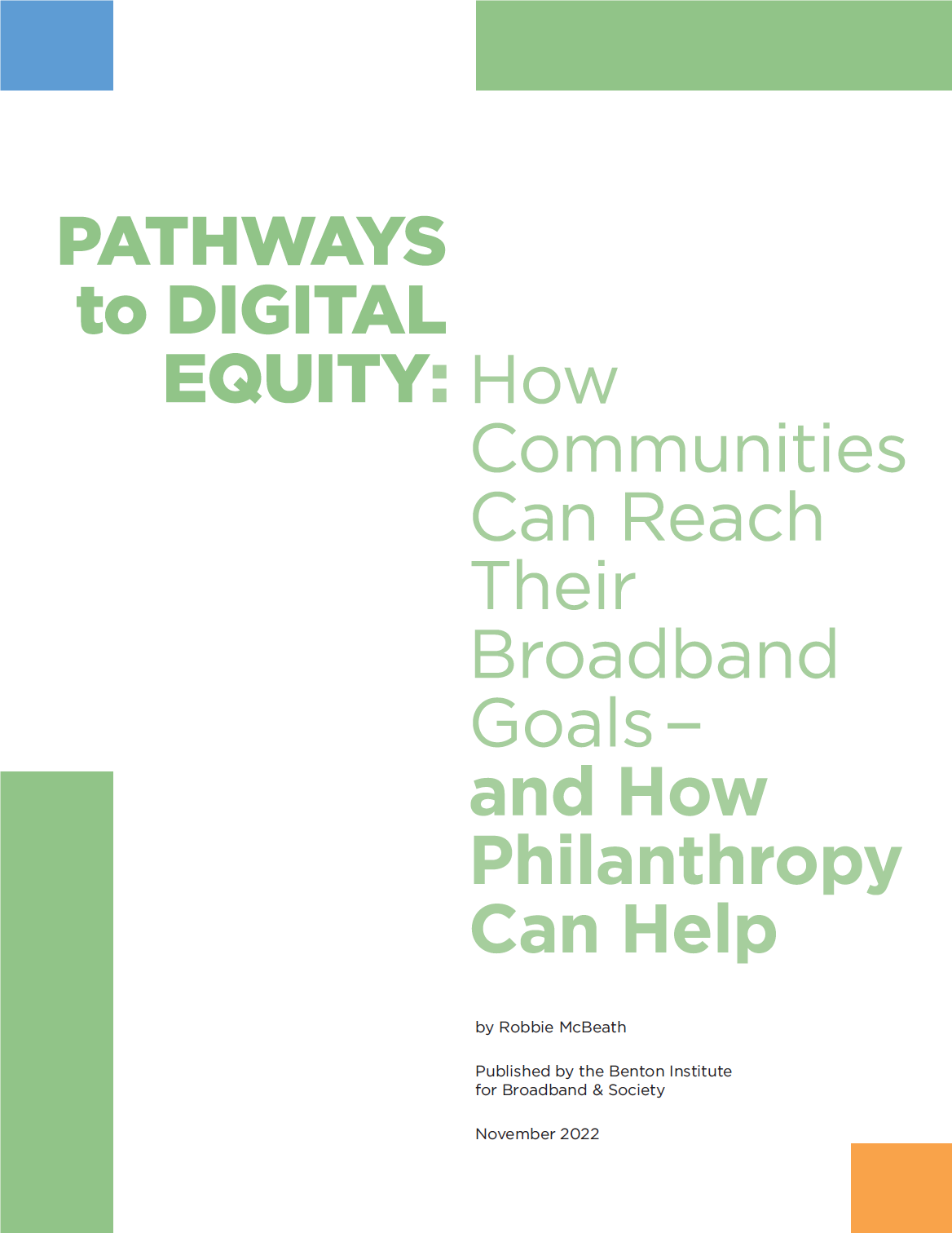How Philanthropy Can Help Communities Reach Their Broadband Goals
Monday, November 7, 2022
Digital Beat
How Philanthropy Can Help Communities Reach Their Broadband Goals

For community leaders striving for digital equity, I am happy to share Pathways to Digital Equity, a guidebook to help communities evaluate and meet specific connectivity needs. My colleague Robbie McBeath charts three pathways—Access, Adoption, and Use—that together offer a comprehensive approach to guide communities’ digital equity planning and provide structure for implementing effective solutions.
Just as every community has unique features and characteristics, so too are its connectivity challenges. With this in mind, communities are encouraged to follow a variety of steps and best practices as they participate in local and regional education and planning programs to build capacity, increase community engagement, and move toward a more equitable future.
In order to receive federal funding from the Infrastructure Investment and Jobs Act, states, territories, and tribes are required to develop broadband infrastructure and digital equity plans in collaboration with local and regional entities. And states are feeling a sense of urgency as these plans required by the National Telecommunications and Information Administration (NTIA)—the administrator of Broadband Equity, Access, and Deployment Program (BEAD) and Digital Equity Act (DEA) funds—must be completed months after states receive their planning grant funds this fall.
Community plans can serve as a vehicle for the input states, territories, and tribes need as they answer the following questions:
- How will we engage with the groups that federal broadband programs are designed to help?
- Which projects will serve communities of color and address historic lack of investment in marginalized communities?
- Which projects will increase meaningful internet adoption and use in communities?
Policymakers can create community-centric solutions only with education, planning, and engagement programs formulated to solve digital equity challenges and structured to engage local stakeholders. Pathways to Digital Equity shows how many solutions have been executed with the help of philanthropy.
 Pathways to Digital Equity builds off of the belief that digital equity starts at the local level. As states, territories, and tribes develop digital equity plans, the stories, tools, and resources found in Pathways to Digital Equity offer both guidance and inspiration for what’s possible when community members have a seat at the table.
Pathways to Digital Equity builds off of the belief that digital equity starts at the local level. As states, territories, and tribes develop digital equity plans, the stories, tools, and resources found in Pathways to Digital Equity offer both guidance and inspiration for what’s possible when community members have a seat at the table.
With so much money coming from the federal government to fund broadband efforts, many philanthropies may be wondering why their involvement is needed.
Although this is a time of unprecedented funding, this opportunity, this “Broadband Moment,” requires a lot of work and coordination. State broadband offices—many in their nascency—can increase their capacity through strategic partnerships. This is a place for philanthropy.
In addition to funding, philanthropic organizations have expertise, as well as important connections to valuable stakeholders. Place-based philanthropies’ deep local knowledge and commitment to strengthen communities can be critical in bringing together the diverse coalitions needed to make progress along Access, Adoption, and Use pathways. Philanthropies with regional or national scope are well positioned to support coordination and share lessons across regions and the country. They can also push for accountability, working to ensure that federal investment meets its aims. Pathways to Digital Equity is filled with stories about how philanthropic efforts have enhanced the work of states and communities to expand broadband access, adoption, and opportunity.
Adrianne B. Furniss is the Executive Director of the Benton Institute for Broadband & Society.
The Benton Institute for Broadband & Society is a non-profit organization dedicated to ensuring that all people in the U.S. have access to competitive, High-Performance Broadband regardless of where they live or who they are. We believe communication policy - rooted in the values of access, equity, and diversity - has the power to deliver new opportunities and strengthen communities.
© Benton Institute for Broadband & Society 2022. Redistribution of this email publication - both internally and externally - is encouraged if it includes this copyright statement.
For subscribe/unsubscribe info, please email headlinesATbentonDOTorg






